
Monday November 14, 2022
By Harriet Barber
In north-eastern Kenya, an unprecedented drought is leading to displacement, escalating inter-clan conflicts, and increasing reports of rape
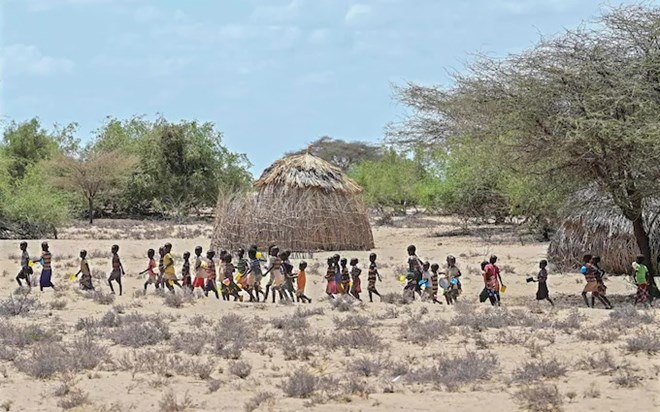
Children from the pastoral Turkana community, northern Kenya, walk to receive lunch rations during a drought-intervention clinic CREDIT: TONY KARUMBA /AFP
In three months, north-eastern Kenya’s villages have witnessed a seismic shift: the men have all but left.
“In August the men moved, taking their little [remaining] livestock,” says Yusuf Abdi, a local programme coordinator for Action Aid. “It is only the women now. They are struggling to feed their families and children.”
North-eastern Kenya, like many of its neighbours in the Horn of Africa, is facing its worst drought in forty years. For the last four seasons the annual rains have failed.
Across Somalia, Ethiopia and north-eastern Kenya, more than 18 million people have been pushed into severe hunger, while millions have fled their homes in search of water and food.
Children are battling malnutrition, with thousands filling up hospital “stabilisation rooms” for urgent care. Unicef estimates almost two million children across the Horn of Africa require urgent treatment for life-threatening malnutrition.
“We no longer have a source of livelihood, we depend so much on livestock. But they [the animals] are all dead,” says Amram, a 21-year-old woman who lives in Garissa County, north-eastern Kenya, which has been hard hit by the drought.
In one nearby village, the men from 48 of the 52 families have left in search of pasture and water. None have returned.
Many of the men travel out of the country, to neighbouring Ethiopia and Somalia, where they are confronted by similarly desolate lands. Tens of thousands end up in internal displacement camps each month.
“Families are going without food. The men have not come back. The women are looking for wild fruit and walking a day to get water,” says Susan Otieno, the executive director of Action Aid Kenya.
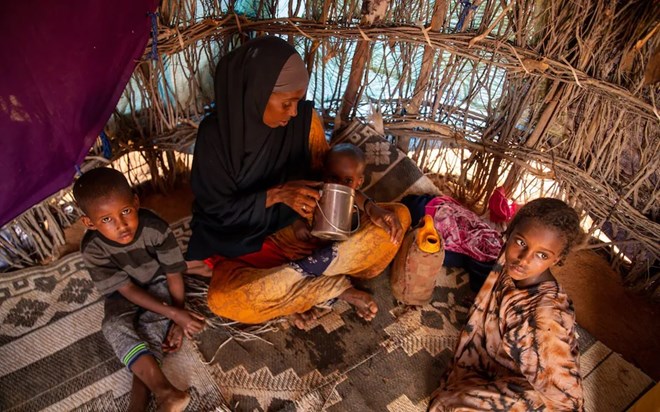
Halima Hussein, a 28-year-old mother, who fled the drought in Somalia at the beginning of October CREDIT: UNHCR/Charity Nzomo
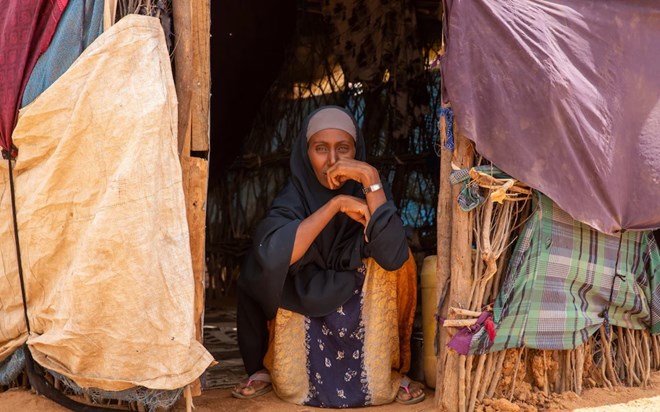
"The food situation in Somalia is bad. I am not sure if the people we left behind will survive, I am afraid," said Halima. CREDIT: UNHCR/Charity Nzomo
The women and children are considered too weak to survive the journey, and are pressured into looking after the elderly and ill who cannot travel. Those left behind are now questioning if their husbands and fathers will ever return.
“My father and four brothers left in search of pasture and water for the livestock,” says 21-year-old Khatra, another woman left behind in Garissa. They have only contacted her twice since leaving, she says. “It’s a long distance so they opted for me to stay in the village.”
“I face a lot of challenges. I go in search for water, for a long distance, far from where I stay,” she adds.
Khatra and Amram describe escalating “inter-clan conflicts” over land boundaries and water sources, due to the drought, and increasing reports of rape.
“Girls, we are not able to move freely now,” says Amram. “Gender-based violence is so high. You will go fetching water and firewood. On your way many men violate young girls, they are raped.”
Aid organisations warn that girls are 20 per cent more at risk of child marriage due to the drought, a consequence of desperate families seeking dowry money once their livestock dies.
“For girls at the moment, the issue of forced child marriage is at its highest point because of hunger,” says Jennifer Kibon, a member of the Women’s Social Movement, an activist group, in Kenya. “Girls are being married off because their community counts them as wealth.”
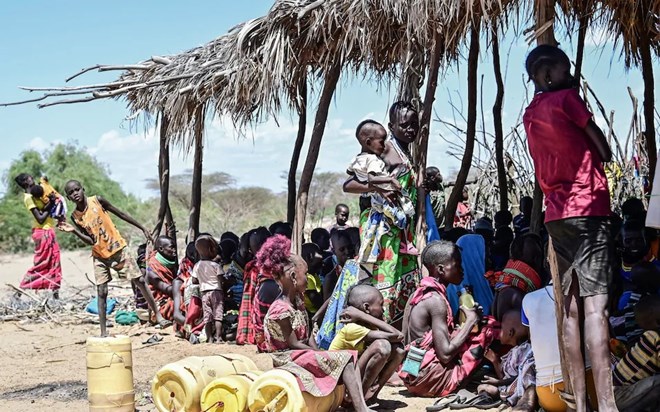
Women from the pastoral Turkana community take their children for medical and nutrition aid at Nadoto village, Kenya CREDIT: TONY KARUMBA /AP
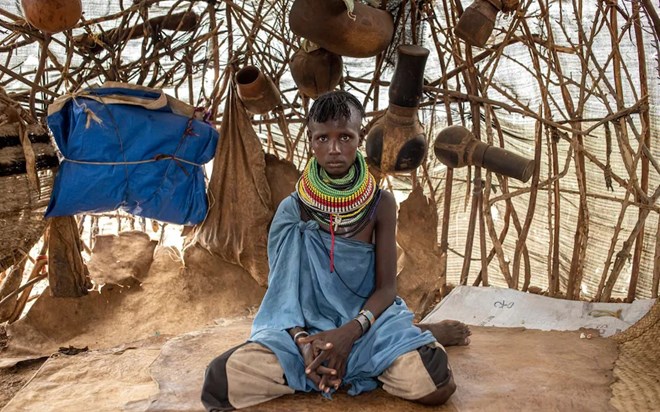
Lokioto Ekal, 30, inside her home in RukRuk village in Turkana, Kenya. Her husband left her during the drought. Two of her children have died due to the drought CREDIT: Patrick Meinhardt / IRC
Amram became a victim of forced marriage five years ago, as her family battled financial hardship during an earlier drought. She was married to a man double her age, who beat her until she escaped.
“I was told: 'Tomorrow you’re going to be married'. School was put to an end. I was forced into it. My dreams were shut down,” Amram says. “It was so sudden.”
Khatra worries that she will also be married soon so that her family can collect the dowry money. “I’m at risk of being married if this drought continues,” she says.
Many of the schools in the area have also closed, long considered an integral institution for preventing child marriage.
NASA scientists and the World Health Organization (WHO) have meanwhile blamed the drought on climate change.
“Climate change is having an impact here and now on the health of Africans in the greater Horn of Africa. The failure of four consecutive rainy seasons has scorched the earth and pushed people out of their homes in search of food and water,” says Dr Matshidiso Moeti, WHO Regional Director for Africa.
“As a continent we are the least responsible for global warming, but among the first to experience its tragic impact.”
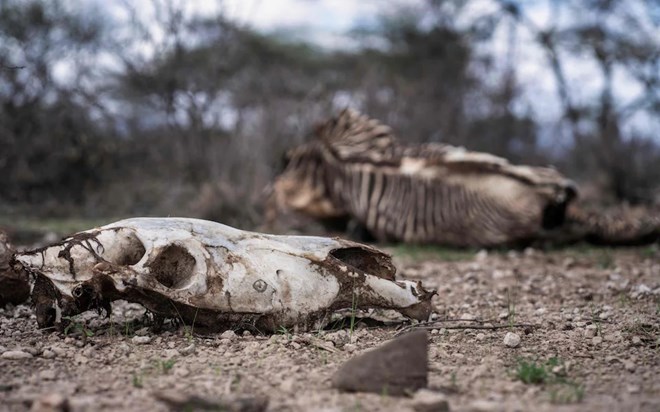
A carcass of a Grevy Zebra, the world's rarest species that only exists in the northern part of Kenya, and Ethiopia, amid an on-going drought CREDIT: AFP /FREDRIK LERNERYD
Rising hunger has been exacerbated by the Covid-19 pandemic and the war in Ukraine, with the price of cooking oil, bread and wheat flour at record highs. “Everything has become expensive,” says Amram.
Another poor rainy season is expected in the remaining months of 2022, and forecasts now indicate a significant likelihood that the March to May rainy season will also fail.
“The weatherman doesn’t foresee rain nearby, but the government won’t respond to us,” says Mr Abdi. “Do you see the government in the town centres? They don’t come down to the local communities.”